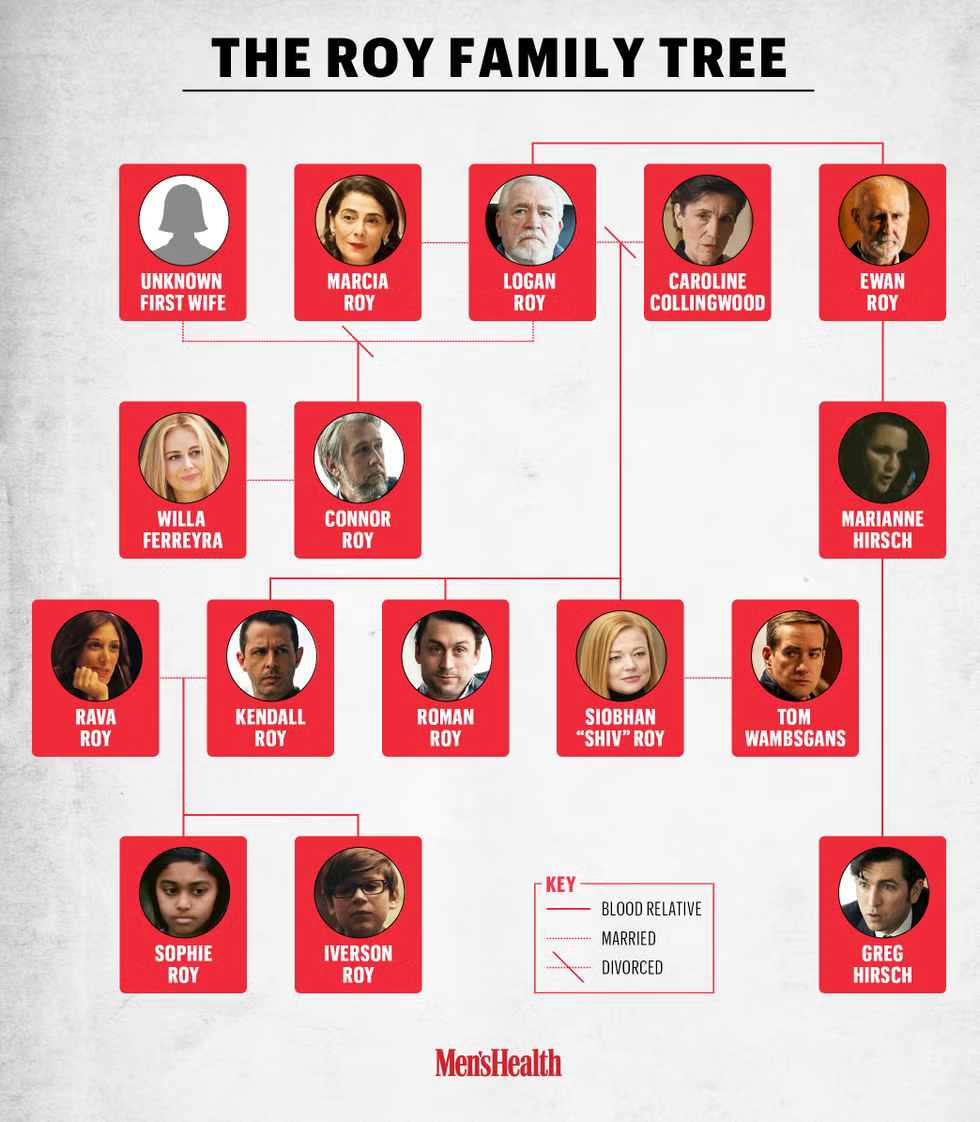Few TV shows have captured the ruthless world of power, family, and media like HBO’s Succession. With its razor-sharp writing and corporate chaos, viewers often wonder: Is Succession based on a true story? The short answer — not exactly, but the long answer reveals a web of real-life inspirations that make the show feel eerily authentic.
The Fiction That Feels Real
Succession isn’t a direct biography of any one media empire. It’s a fictional story crafted by creator Jesse Armstrong, who drew from several real-world moguls to build the Roy family and their company, Waystar RoyCo. The show follows Logan Roy and his four children — Kendall, Shiv, Roman, and Connor — as they fight for control of the empire while balancing ego, loyalty, and betrayal.
While Armstrong insists the Roys are not a direct copy of anyone, he’s admitted that the series takes “bits and pieces” from real people and events across the global media landscape.

1. The Murdochs: The Closest Parallel
If Succession feels like a window into a certain real-life media dynasty, that’s no coincidence. The Murdoch family, founders of News Corp and Fox Corporation, are the most obvious influence.
Rupert Murdoch, the Australian-born billionaire, built one of the largest media empires in history, owning newspapers, TV networks, and film studios across continents. Much like Logan Roy, Murdoch’s grip on his company — and the question of which of his children would succeed him — has long fascinated journalists.
Rupert Murdoch = Logan Roy: a hard-driving patriarch with an unshakable belief in his legacy.
Lachlan Murdoch = Kendall Roy? The favored heir apparent who’s stumbled under pressure.
James Murdoch = Roman Roy? The rebellious son who’s broken from the family business.
Elisabeth Murdoch = Shiv Roy? A daughter carving her identity beyond her father’s shadow.
The similarities became even more noticeable when The New York Times published “The Rise of Lachlan Murdoch”— right around the time Succession aired its final season. The headlines practically mirrored the show’s central conflict: power, inheritance, and corporate identity.
2. Other Real-World Inspirations
The Redstones – Viacom and CBS
Another major influence comes from the Redstone family, who controlled ViacomCBS (now Paramount Global). Sumner Redstone’s late-life legal battles and boardroom fights between his daughter, Shari Redstone, and corporate executives echoed many Succession-style showdowns.
The Redstones’ story — full of lawsuits, changing alliances, and elder-care controversies — provided a glimpse into how billion-dollar empires can collapse from within, not unlike the Roys’ internal warfare.
The Maxwells – British Power and Scandal
British audiences quickly saw shades of Robert Maxwell, the media tycoon whose empire collapsed under scandal in the 1990s. Maxwell’s fall from grace — including accusations of pension fund misuse — and his larger-than-life personality have clear parallels to Logan Roy’s mix of brilliance and brutality.
Interestingly, creator Jesse Armstrong is British, and many of his early writing projects (like The Thick of It) were steeped in political satire and class commentary. It’s no surprise that the Roys also carry that very British blend of irony and arrogance.
The Hearsts and Beyond
You can trace the DNA of Succession even further back to early 20th-century press moguls like William Randolph Hearst, whose empire inspired Citizen Kane. Hearst’s belief that media equals influence — and that wealth can rewrite truth — runs deep in Succession’s veins.
The legacy of Hearst, Murdoch, and others reinforces the timeless theme: media power isn’t just about headlines — it’s about shaping reality.
3. Jesse Armstrong’s Vision: Not About “Who,” But “What Power Does”
In interviews with The New Yorker, Armstrong clarified that Succession was less about copying a family and more about exploring the mechanics of power.
He said:
“We wanted to capture what it feels like to grow up in the orbit of great wealth, and how it distorts your view of love, trust, and reality.”
That’s why Succession resonates far beyond the boardroom — it’s a mirror for anyone who’s watched power corrupt relationships, whether in politics, business, or family life.
4. Realistic Elements That Make Fans Think It’s True
Corporate Realism
From shareholder meetings to hostile takeovers, Succession nails the corporate details. The production team even hired financial consultants to ensure accuracy in scenes involving mergers, stock options, and media jargon.
Authentic Language
Armstrong’s team crafted dialogue that sounds spontaneous yet deeply researched. The boardroom insults, PR strategies, and tech buzzwords all echo real media executives.
Cultural Timing
Succession premiered in 2018 — a time when trust in media was at historic lows. It arrived right when people were questioning how much control billionaires have over the news they consume. That timing cemented its “this-could-be-real” feel.
5. Power, Legacy, and the Myth of Control
At its core, Succession is about legacy — and the illusion that wealth can guarantee it. Like Murdoch or Redstone, Logan Roy is obsessed with his name outliving him. But the series reminds viewers that control is temporary, even for kings of media.
By the final season, every Roy child — Kendall, Shiv, Roman, and Connor — is broken in a different way. They inherit money but not purpose. The empire outlasts the family, echoing a truth we’ve seen throughout history: power is easy to gain, impossible to keep.
6. The Verdict: Truth Wrapped in Fiction
So, is Succession based on a true story? Not directly. But it’s built from the DNA of the world’s most powerful media dynasties — a hybrid of Murdoch ambition, Redstone drama, and Maxwell downfall.
That blend of reality and fiction is what gives the show its bite. We recognize the Roys because we see them everywhere — in newsrooms, in boardrooms, and sometimes even in politics.
